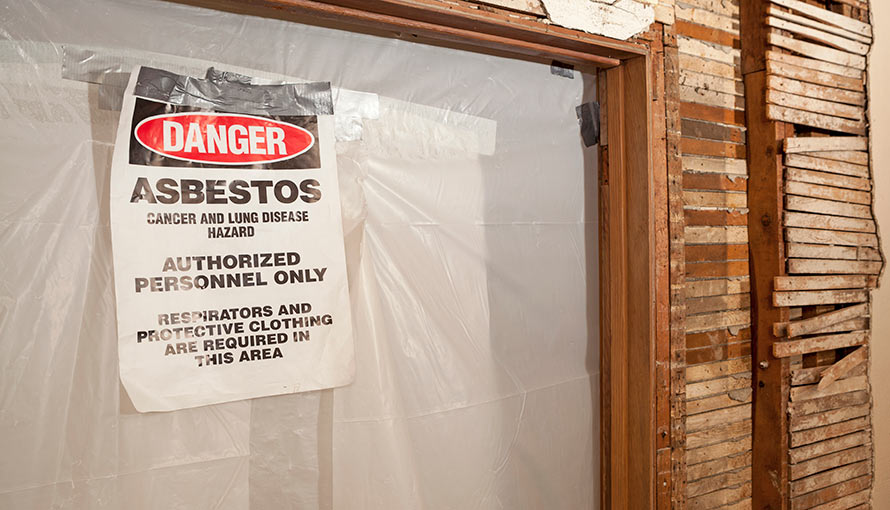Mesothelioma Causes and Risk Factors

Mesothelioma is a rare and aggressive type of cancer that usually forms in the thin protective membrane surrounding the lungs (pleura) or chest wall. Less commonly, the cancer develops in the lining of the abdominal cavity (peritoneum) or the tissues surrounding the testicles (tunica vaginalis).
What causes mesothelioma?
Like all cancers, mesothelioma begins with harmful changes to cellular DNA. The mutations cause the DNA to provide faulty instructions for cell replication, prompting uncontrolled cell growth. Over time, the excess abnormal cells accumulate and form a mass (tumor).
What are the risk factors for mesothelioma?
Through extensive research, scientists have conclusively linked asbestos exposure to the harmful DNA changes that lead to the development of mesothelioma. Asbestos is a mineral fiber that occurs naturally in the rock and soil of certain parts of the United States. It is commonly found in hilly or mountainous areas, such as Libby, Montana, and California’s El Dorado County.
Asbestos fibers are thin and sharp. When inhaled, they can become lodged in the lungs’ tiny airways and irritate the pleura. The irritation causes inflammation and DNA damage that can eventually lead to mesothelioma.
Occupational asbestos exposure is the primary risk factor for mesothelioma
Most mesothelioma cases can be traced to occupational asbestos exposure. Employees in high-risk occupations include:
- Construction workers – Some flooring and roofing products contain asbestos, which was widely used as a form of insulation before researchers discovered its negative health effects. Demolition crews and home remodelers are particularly at risk.
- Firefighters – Because first responders can be exposed to high levels of asbestos when putting out fires and rescuing occupants of burning buildings, they are at heightened risk of developing mesothelioma.
- Power plant workers – Asbestos is often found in old pipes and insulating materials. According to a recent study, asbestos was detected in the mucus of approximately one-third of the power plant workers tested.
- Navy veterans – In the 1900s, asbestos was routinely used to build naval ships. As a result, many sailors and shipbuilders were exposed to dangerous levels.
- Skilled trade workers – Mechanics, machinists and chemical operators may frequently come in contact with new products and materials that contain legal levels of asbestos.
Until the Environmental Protection Agency (EPA) took regulatory action in the 1970s, many industrial workers routinely handled raw asbestos or asbestos-containing materials in the course of performing their job duties. Because the genetic mutations associated with mesothelioma typically occur gradually over time, the resulting health problems may not become apparent for many years—or even decades—after the causal asbestos exposure.
Less often, mesothelioma results from secondhand asbestos exposure, which occurs when an individual comes in contact with asbestos fibers on the hair, skin or clothing of another individual who was directly exposed. Mesothelioma can also result from environmental asbestos exposure, which occurs when an individual comes in contact with asbestos in rock or soil.
Other mesothelioma risk factors
Compared to women, men—especially those older than 65—are at higher risk of developing mesothelioma. Researchers attribute this to the fact that men are more likely to have worked in asbestos-contaminated job sites than women, especially prior to the enactment of the protective federal regulations in the 1970s.
In addition to asbestos exposure, other factors that can increase the risk of mesothelioma include:
- Prior radiation therapy delivered to the chest
- Chronic lung inflammation
- A chest injury
- Simian virus 40 (SV40), which contaminated a small number of polio vaccines in the 1950s and 1960s
- Exposure to non-asbestos mineral fibers, such as erionite and taconite
Scientists do not believe that smoking directly causes mesothelioma. However, when combined with asbestos exposure, a history of tobacco use can further increase the risk.
Benefit from world-class care at Moffitt Cancer Center
If you are concerned about mesothelioma, a specialist in our Thoracic Oncology Program can provide a personalized risk assessment and suggest a screening test if appropriate. You can request an appointment by calling 1-888-663-3488 or submitting a new patient registration form online. No referral is necessary.
